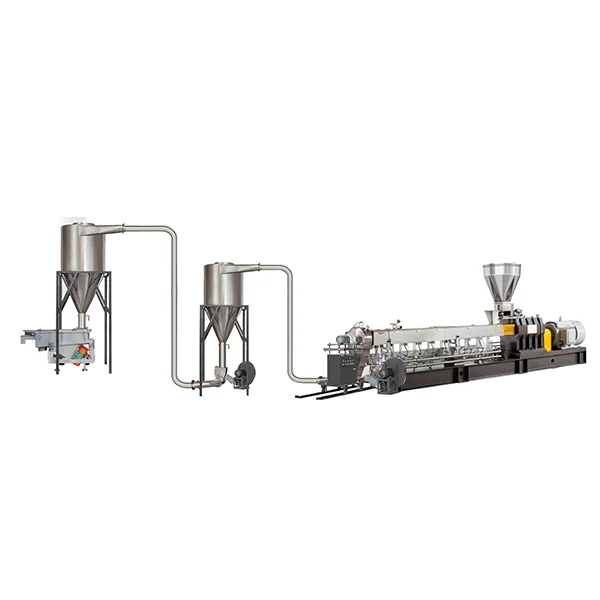Graphite, a form of carbon with a unique crystalline structure, is renowned for its diverse and valuable properties. Its distinct characteristics make it a material of choice in various high-tech and industrial applications. This article delves into the fundamental properties of graphite materials, examining their implications and uses across multiple sectors.
- The Structure of Graphite
To fully understand the properties of graphite, it's essential to begin with its structure:
- Hexagonal Lattice: Graphite consists of carbon atoms arranged in a hexagonal lattice within layers. Each carbon atom is bonded to three others, forming a planar network of hexagons.
- Layered Arrangement: The layers are held together by weak van der Waals forces, allowing them to slide over one another easily. This layered structure is crucial to many of graphite's unique properties.
- Key Physical Properties a. Electrical Conductivity
- High Conductivity: Graphite is an excellent conductor of electricity due to the presence of delocalized electrons within its layers. These electrons move freely, allowing efficient current flow. This property is leveraged in applications such as electrodes for electric arc furnaces and batteries.
- Anisotropic Conductivity: The electrical conductivity of graphite is anisotropic, meaning it varies with direction. Conductivity is highest along the planes of the lattice and much lower perpendicular to these planes. b. Thermal Conductivity
- Superior Heat Transfer: Graphite has high thermal conductivity, particularly within its layers. This makes it effective in heat dissipation applications, such as in heat sinks for electronic devices and as a component in thermal management systems.
- Temperature Resistance: Graphite can withstand high temperatures without significant degradation, which is beneficial for applications involving intense heat, such as in refractory materials and high-temperature processing. c. Lubrication
- Low Friction: The layered structure of graphite allows the planes to slide over each other with minimal friction. This makes graphite an effective dry lubricant, useful in various mechanical systems where liquid lubricants are unsuitable or impractical.
- Self-Lubricating: Due to its lubricating properties, graphite is used in environments where lubrication is difficult, such as in high-temperature applications and vacuum environments. d. Mechanical Strength and Flexibility
- Strength and Durability: Despite its layered structure, graphite is relatively strong and durable. The bonding within the layers provides significant strength, while the flexibility of the layers allows for some degree of deformation without breaking.
- Tensile Strength: Graphite exhibits high tensile strength along the planes of the lattice, making it suitable for reinforcing materials and composites.
- Chemical Properties a. Chemical Inertness
- Resistance to Chemical Reactions: Graphite is chemically inert and resistant to acids and bases, which makes it suitable for use in aggressive chemical environments. This property is exploited in applications such as chemical reactors and electrochemical cells. b. Oxidation Resistance
- Controlled Oxidation: While graphite can oxidize at high temperatures, its resistance to oxidation is relatively high compared to other materials. This characteristic is important for applications involving high temperatures and corrosive environments.
- Types of Graphite and Their Properties
Different forms of graphite exhibit unique properties tailored to specific applications:
a. Natural Graphite
- Crystalline Flake Graphite: Known for its high conductivity and lubrication properties, it is used in batteries, lubricants, and as a filler in various products.
- Amorphous Graphite: This type has a less ordered structure and is used in applications requiring lower purity graphite, such as in refractories and as a carbon additive in steelmaking.
- Vein Graphite: High-purity and found in veins, it is used in high-value applications like advanced batteries and high-tech materials. b. Synthetic Graphite
- Electrode-Grade Graphite: Produced through high-temperature processes, it is used in electric arc furnace electrodes and other high-demand applications.
- Expanded Graphite: Created by treating natural graphite with acids, this form expands when heated and is used in gaskets, seals, and thermal insulation.
- Applications of Graphite Materials
Graphite's properties make it suitable for a wide range of applications:
a. Industrial Applications
- Lubricants: Used in various industries to reduce friction and wear in mechanical systems.
- Refractory Materials: Employed in high-temperature environments like furnaces and kilns due to its resistance to heat and corrosion. b. Energy Storage
- Batteries: Integral to lithium-ion batteries, where it serves as the anode material, benefiting from its high conductivity and stability.
- Fuel Cells: Utilized in hydrogen fuel cells for its conductive properties and resistance to chemical reactions. c. Electronics and Heat Management
- Conductive Materials: Used in electronic devices for its superior electrical conductivity, including in components such as resistors and transistors.
- Heat Sinks: Leveraged for its thermal conductivity in dissipating heat in electronic devices. d. Advanced Technologies
- Graphene: A single layer of graphite, graphene exhibits exceptional electrical, thermal, and mechanical properties, leading to its use in advanced electronics, nanotechnology, and materials science.
- Composite Materials: Incorporated into various composites to enhance their strength and conductivity, applied in aerospace and automotive industries.
- Future Directions
Ongoing research into graphite and its derivatives continues to unlock new potential applications:
- Graphene Innovations: Advances in graphene technology promise to revolutionize multiple fields, including electronics, energy storage, and materials science.
- Recycling and Sustainability: Efforts are focused on improving the recycling processes for graphite, particularly from used batteries and other products, to enhance sustainability. Conclusion
Graphite materials possess a unique combination of properties that make them indispensable in many industrial and technological applications. Understanding these characteristics—ranging from electrical and thermal conductivity to chemical inertness—provides insight into the diverse uses and future potential of graphite. As research and technology evolve, graphite's role in advanced materials and sustainable solutions is likely to expand, showcasing its enduring significance in the modern world.


